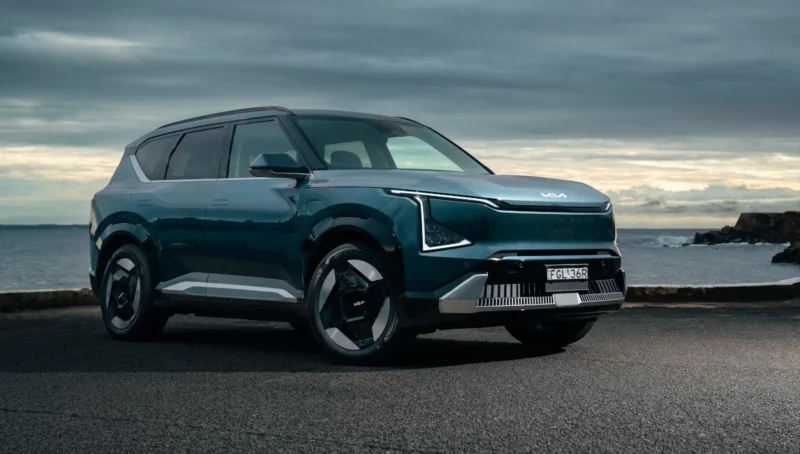The EV5 made by South Korea car company Kia is one of the latest entrants into the crowded midsize electric SUV market, joining several new brands and numerous SUV models arriving in Australia during the last quarter of 2024.
Kia has high hopes that the EV5 will be its best selling electric model yet, given that – partly because it will be made in China rather than its home country – it will be its lowest price EV offering in Australia so far.
“We’re expecting to sell 400 a month,” Kia Australia CEO Damien Meredith told journalists during the company’s EV5 drive day event this month. This is more than double the number of Kia EV6 sold each month and would put the EV5 just outside the top 5 of the monthly EV sales chart, behind Tesla, BYD and the MG4.
The prices for the EV5 were announced last week, with a base EV5 Air Standard Range pitched at $56,770 driveaway, around $4,000 cheaper than a Tesla Model Y Rear-Wheel Drive. The Air Long Range starts from $61,170 plus on-road costs, Earth Long Range AWD from $64,770 plus on-roads and GT-Line Long Range AWD from $71,770 plus on-roads.
The EV5 is almost half the price of the EV9 electric people mover, which starts from approximately $106,500 including on-road costs. EV5 is around $20,000 cheaper than equivalent EV6 variants and also undercuts the slightly smaller Kia Niro EV starting from $66,590 plus on-road costs.
This competitive price point was made possible by Kia building EV5 in their Yancheng factory in China, as opposed to South Korea where other Australian Kia EVs are sourced. EV5 also utilises lithium iron phosphate (LFP) blade batteries in all variants including Long Range, manufactured by BYD subsidiary FinDreams.
Looking into price parity against Kia’s ICE models, a combustion powered Kia Sportage is the closest match to an EV5 in terms of size and it ranges from $32,995 to $52,920 plus on-road costs, so there is still a large gap between Kia’s combustion and electric vehicles.
Kia invited The Driven to test drive and learn all about the EV5 over two days, while taking in the sights and scenery on the NSW south coast, Kangaroo Valley and Southern Highlands.
Looks and feels just like a smaller EV9
My first thought upon seeing the EV5 was that it looks remarkably similar to the EV9, sharing the same boxy shape and overall design language as Kia’s larger 7-seat sibling. From a distance it is genuinely hard to tell the two apart, especially without other cars nearby for scale.
Measurement wise, the EV5 is 395 mm shorter, 105 mm narrower and 40 mm lower than an EV9. Most of the additional length in an EV9 is accounted for by a 350 mm longer wheelbase, which makes sense given it has an extra row of seating to accommodate.
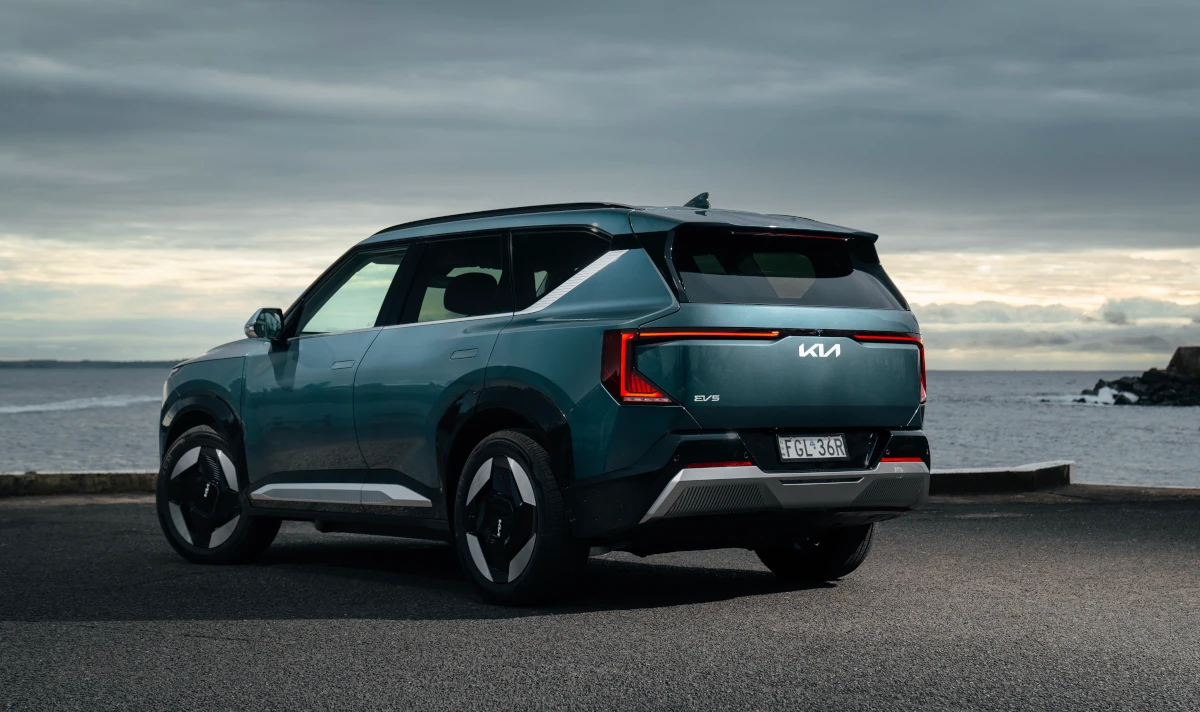
This boxy design has several advantages when it comes to storage and interior space. Boot space in the EV5 is 513 L, with a large wide opening and flat floor. This expands to 1,714 L with the seats folded. Additional space is available underneath the boot floor as well as a 67 L front storage compartment, easily accessible via one of the key fob buttons.
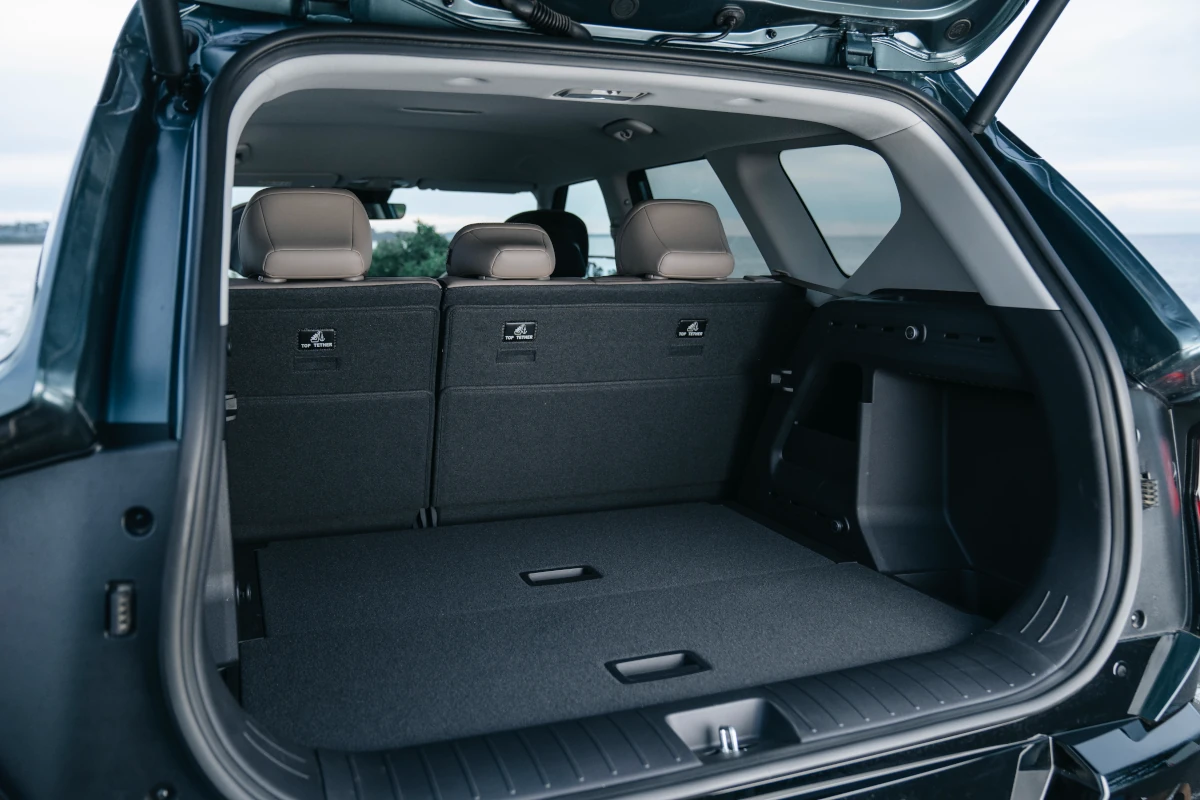
Rear seats fold completely flat in the EV5 and Kia will be selling a blow up mattress that fits perfectly in the back if you want to take the car glamping. I spent a very comfortable night in the back of an EV9 previously with loads of room to spare, and the EV5 looks just as good for sleeping in unless you are very tall.
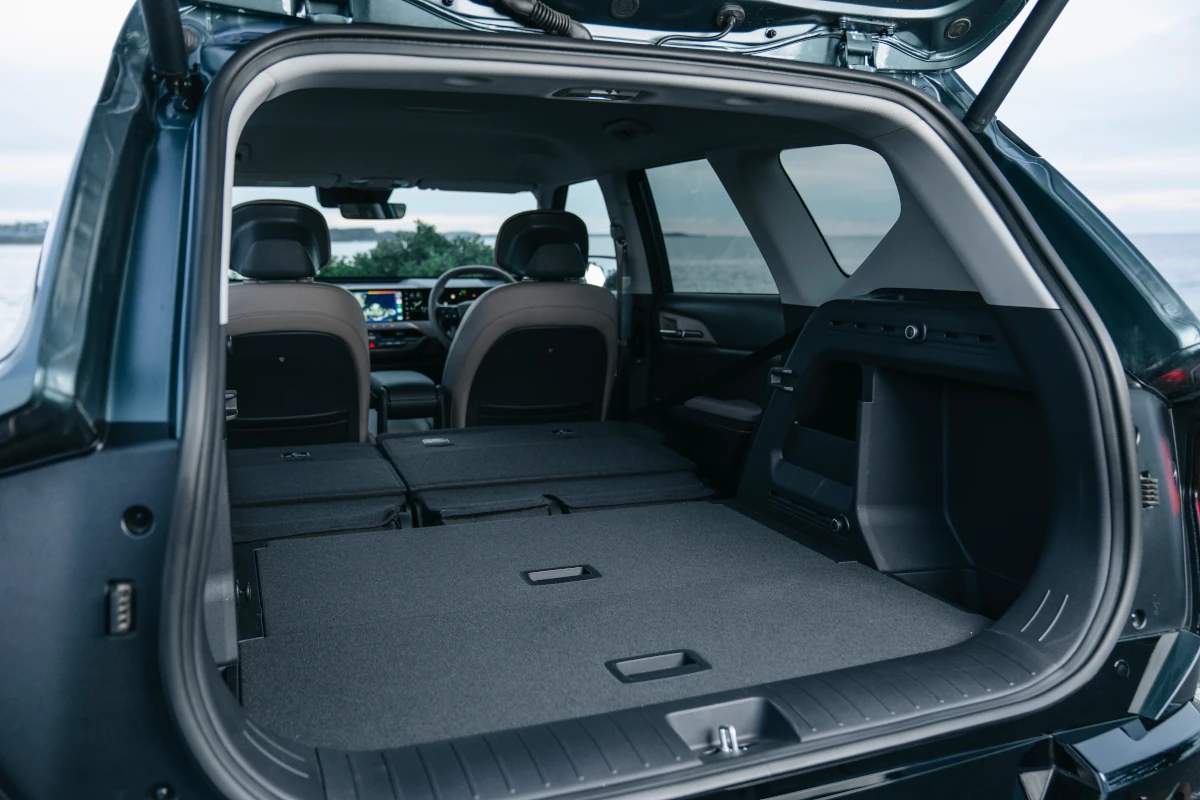
Throughout the boot there are cubby holes for storing smaller items as well as adjustable luggage hooks that can be placed in various holes positioned high and low. An internal vehicle to load (V2L) socket is also located in the boot, capable of supplying up to 15 A.
The strong resemblance between the EV5 and EV9 continues inside the cabin, with a familiar dash layout featuring identical 12.3 inch touchscreen and driver’s display sandwiched either side of a 5 inch climate monitor. Wireless Apple CarPlay and Android Auto are both available.
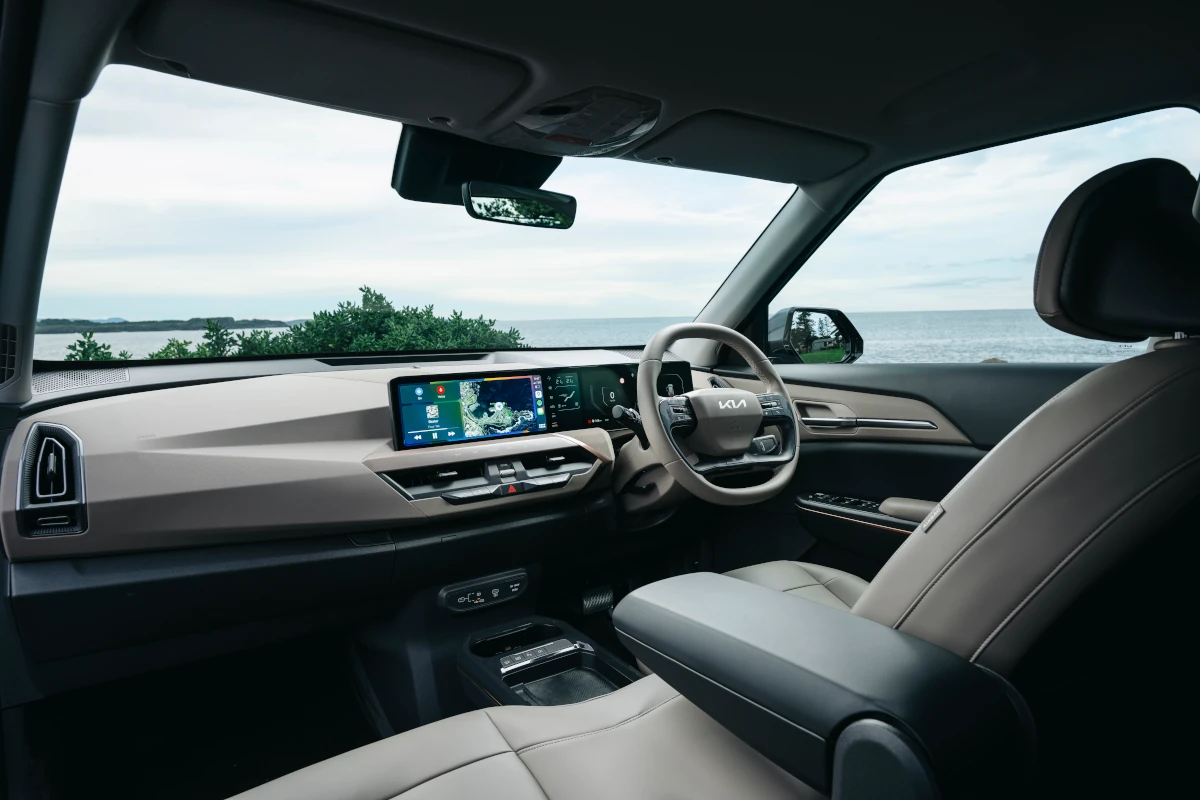
I found the infotainment screens were responsive and intuitive, just like those in other Kia and Hyundai EVs. There is good use of physical buttons on the dash for adjusting the climate, along with a row of capacitive buttons below the screen with shortcuts to the home screen, map, media, settings and a customisable star button.
In terms of comfort, front seats in the EV5 felt great after hours of driving and being a passenger, with no discomfort at all. EV5 Air seats are trimmed in cloth and artificial leather while Earth and GT-Line are all artificial leather.
For long or stressful drives, the driver’s seat comes with a massage function in all variants, which extends to the passenger side in the GT-Line. Front row seats are heated across the board, while GT-Line also gets heated rear outer seats and ventilated front seats.
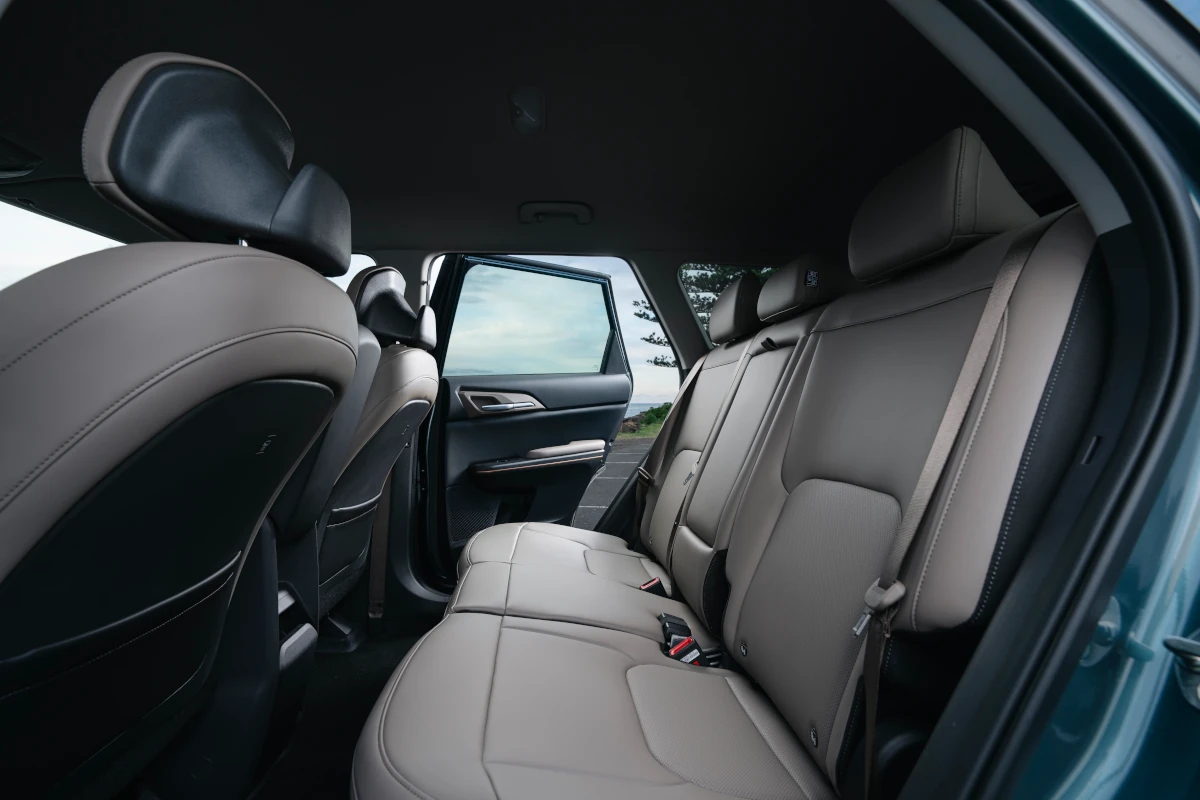
The second row seats are spacious too, although not quite on the same level as those in the EV9. Rear seats can be reclined with three different positions available. Amenities in the back include USB-C ports, map pockets, air vents on the B-pillar and a fold down armrest with 2 cupholders.
A handy rear storage tray slides out backwards from underneath the centre console for storing things out of sight. In the top-spec GT-Line this tray also has a cooling or heating function, with temperature settings anywhere between 5 – 55 degrees Celsius. The tray pulls out much further than shown in the picture below.
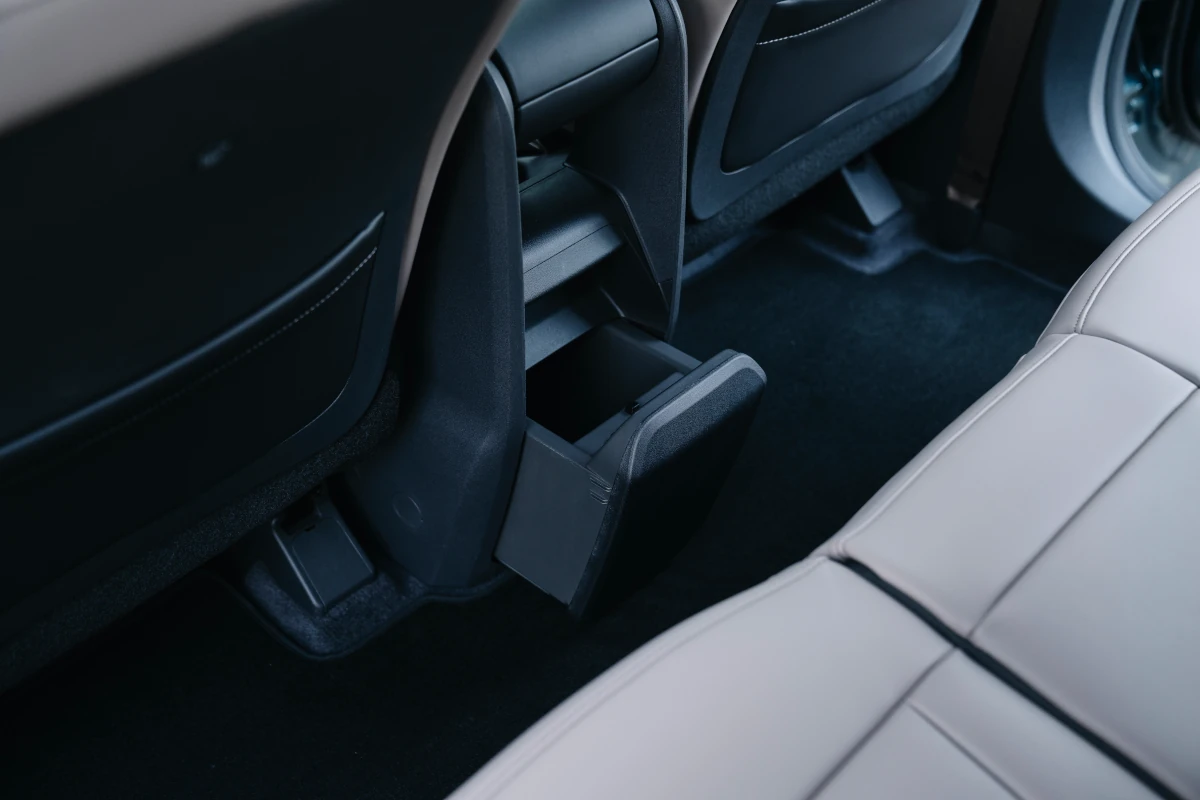
Overall fit and finish of the EV5 cabin feels premium and solid throughout all variants. I found no noticeable difference in terms of build quality compared to other Kia electric vehicles that I have tested.
Comfortable, smooth and quiet ride
During Kia’s test drive program we got to spend time driving the front-wheel drive Air and all-wheel drive Earth variants. Unfortunately the top-spec GT-Line was not ready yet, but it should be very similar on the road to the Earth AWD outside of the creature comforts in the cabin mentioned above.
Both EV5 variants felt responsive and well planted through low and high speed corners. The suspension is tuned more for comfort and ride quality, providing a smooth, quiet ride over bumps and rougher patches of road we travelled on. Some body roll was evident, but the EV5 is not designed to be a sporty car like the EV6.
Just like the EV6 and EV9, Kia completed an extensive ride and handling program for the EV5. “The focus for this car was not to make it too sporty, but it’s an urban usage, daily usage type vehicle,” the engineers told us. “It uses a frequency variable damper so it can change its damping continuously based on ride inputs to the car.”
Prior to driving the EV5, I thought front-wheel drive Air variants might feel inferior compared to single-motor rear-wheel drive EV6 or EV9. When I asked about this, Kia responded saying it is a global direction and a drive for both packaging and cost components went into making the decision.
On the road, the difference between Air and Earth variants was much less than I had anticipated. Apart from the Earth being a bit quicker, most people would probably not notice. The only time I felt some minor torque steer in the EV5 Air was when I pulled out and accelerated hard to overtake another car.
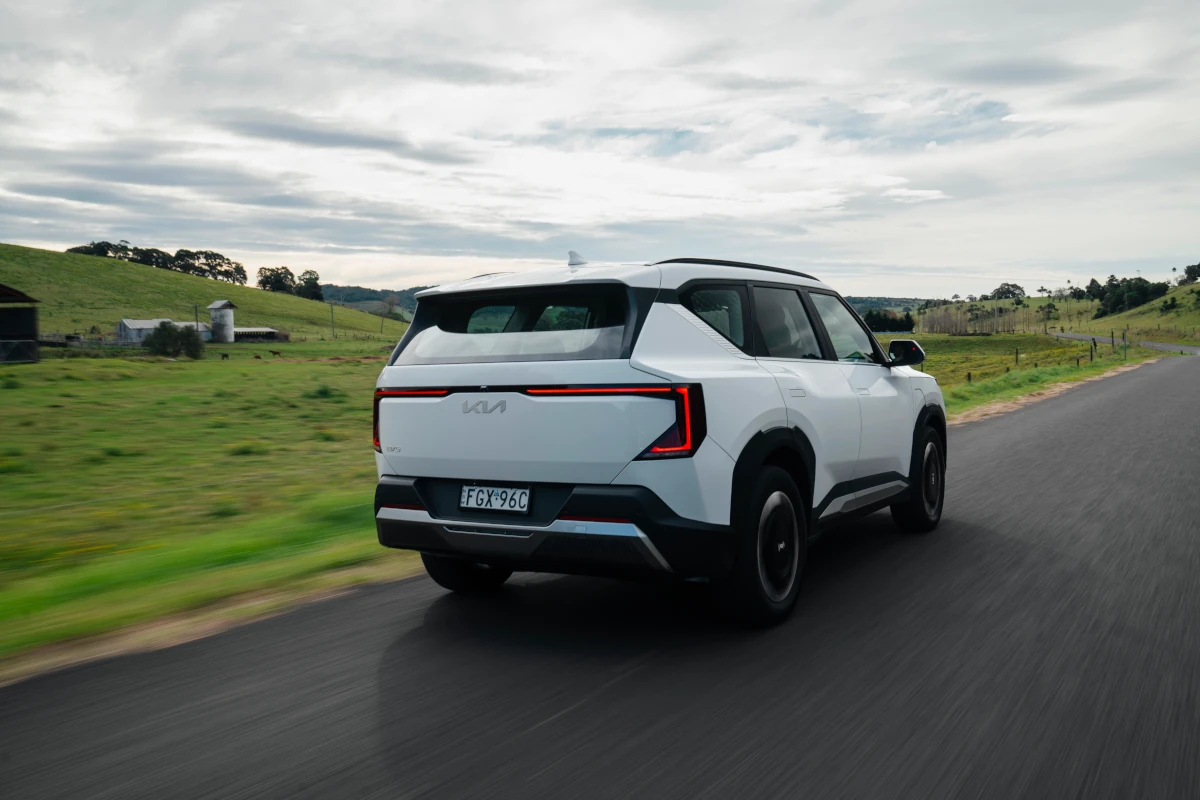
Regenerative braking is well tuned and can be adjusted quickly using steering wheel paddles. A gripe of mine is you need to turn it up to full i-Pedal or one pedal driving strength every time you start the car, use reverse or change drive modes, I’d prefer if the car remembered your settings.
Adaptive cruise control and lane centering on the highway worked well, apart from slight wavering in the lane at times. Lane keeping aid was occasionally intrusive, jerking the wheel unexpectedly when the lane widened temporarily after a turnoff for example.
Similar to other Kia and Hyundai vehicles, the speed limit warning enabled at the start of every drive can get annoying as it is prone to false positives when it incorrectly detects speed signs. Kia confirmed that the next OTA software release brings a shortcut for disabling the warning by holding down the mute button on the steering wheel.
WLTP range kicks off at 400 km in the Air Standard Range, jumping up to 555 km if you opt for the Long Range battery with the Air. This drops to 500 km in the Earth or 470 km in the GT-Line, primarily due to these variants using larger 19 and 20 inch rims respectively.
It was hard to get an accurate read on efficiency during the test drive program with multiple drivers and car swaps. However, the worst leg I observed used 193 Wh/km while travelling mainly uphill with lots of sharp corners in an Air Long Range. On the way back from Bowral to Sydney in an Earth AWD we consumed 163 Wh/km.
Charging and ownership
Maximum DC charging speeds are not listed in Kia’s official EV5 spec sheet, but 10-80% charging times on a 350 kW charger are 36 minutes for the Standard Range 64 kWh battery and 38 minutes for the Long Range 88 kWh battery.
On board AC charging is limited to 6.6 kW single phase for the Air Standard Range whereas other variants are capable of up to 11 kW on three phase. An external V2L adapter is included with Earth and GT-Line variants, but can be purchased separately for use with the Air.
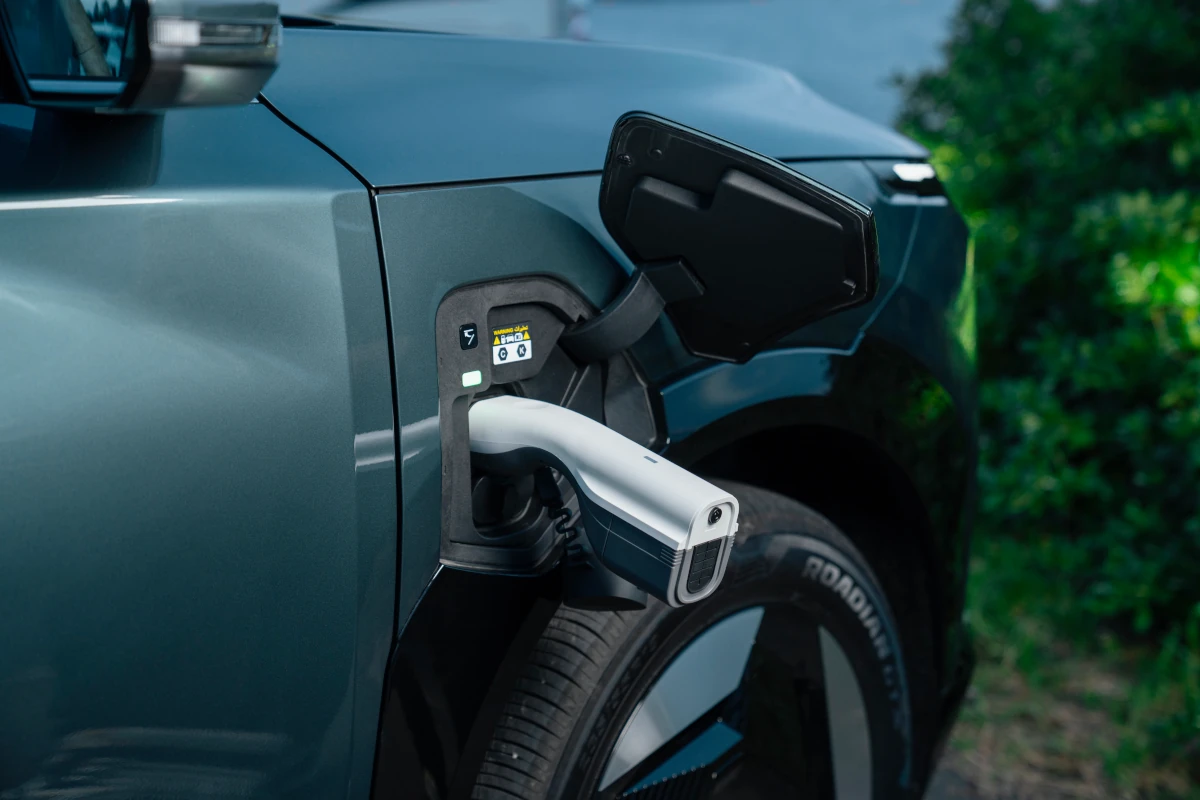
Kia has moved the charge port from the rear driver’s side where it is on EV6 and EV9 up to the front driver’s wheel arch. This is not good for kerbside chargers where the cable may need to be draped across the bonnet, potentially damaging paintwork. Keep this in mind if you use these sorts of chargers regularly.
Towing capacity for the Air Standard Range variant is 300 kg braked or unbraked, with 50 kg max towball download. This increases to 750 kg unbraked or 1,250 kg braked with 100 kg max towball download for all Long Range variants.
The EV5 comes with a 7 year/unlimited km warranty covering the vehicle and 7 year/150,000 km for the battery pack and high voltage components such as the electric motor(s). Prepaid service plans are available for 3 years ($980), 5 years ($1,535) or 7 years ($2,431).
Clarification on EV5 delay and Kia’s future EV plans
Originally the EV5 was due to arrive in Australia in June 2024, but this was pushed back due to “wheel and software issues.” Meredith expanded on these issues during the Q&A, “With a new model, doesn’t matter whether it’s Tasman or EV5, we ensure that it’s ready for market and acceptable for market.”
“When a new product comes out of a factory that’s not country of origin, you have to ensure you have a great relationship with that and your quality level has to be at the level you want it for the market, and that’s why we delayed. We wanted to make sure the car was spot on to enter the market.”
Thomas Wacker, General Manager Service for Kia Australia also clarified, “We had some issues with vibrations in the car, so we had some tyre balance issues that we needed to sort out, and that took some time working directly back with the factory.”
“And from a software perspective, the MDPS (Motor Driven Power Steering) steering just wasn’t right for what we need, so we needed to get that updated as well.”
During the test drive program I did not experience any vibrations or steering issues in the car so Kia appears to have satisfactorily resolved these problems. EV5 Air and Earth variants are due to arrive in Kia dealerships imminently, followed by the GT-Line coming in December 2024.
When asked about Kia’s plans to fill in the gaps in their EV lineup such as a smaller EV1 or EV2, Kia executives were unable to confirm anything beyond their next electric vehicle being the EV3 SUV arriving late Q1 or early Q2 2025.
Conclusion
The EV5 is a compelling vehicle overall and should compete well against the growing number of electric SUVs arriving on our shores. From design, through to driving experience and functionality, Kia has successfully taken their flagship EV9 formula and applied it to a smaller and much more affordable package in the EV5, assuming you don’t need 7-seats.
On the other hand, if you prefer driving something sportier or with a sleeker design, take the EV6 for a test drive. A refreshed 2025 EV6 is coming soon, which includes interior and exterior updates to bring it in line with the rest of Kia’s EV range.
Table of key specifications for Kia EV5
Note the EV5 Air Standard Range price is driveaway, whereas prices for the other variants below do not include on-road costs.
| Variant | Air Standard Range | Air Long Range | Earth Long Range | GT-Line Long Range | ||
| Starting price | $56,770* | $61,170 | $64,770 | $71,770 | ||
| Battery size | 64 kWh | 88 kWh | ||||
| Battery chemistry and manufacturer | Lithium iron phosphate (LFP), FinDreams | |||||
| Range (km, WLTP) | 400 | 555 | 500 | 470 | ||
| Driven wheels | Front-wheel drive | All-wheel drive | ||||
| Power / Torque | 160 kW / 310 Nm | 230 kW / 480 Nm | ||||
| Charging time | 7 kW AC (10 – 100 %) – 9 hours 43 minutes 50 kW DC (10 – 80 %) – 57 minutes 350 kW DC (10 – 80 %) – 36 minutes |
11 kW AC (10 – 100 %) – 8 hours 10 minutes 50 kW DC (10 – 80 %) – 72 minutes 350 kW DC (10 – 80 %) – 38 minutes |
||||
| Exterior dimensions (mm) | Length: 4,615 Width: 1,875 Height: 1,715 Wheelbase: 2,750 |
|||||
| Ground clearance (mm) | 175 | 161 | 166 | |||
| Kerb weight (kg) | 1,910 | 2,054 | 2,198 | 2,229 | ||
| Storage space (VDA) | Frunk: 67 L Boot, rear seats up: 513 L Boot rear seats folded: 1,714 L |
|||||
| Service interval | 12 months / 15,000 km | |||||

Tim has 20 years experience in the IT industry including 14 years as a network engineer and site reliability engineer at Google Australia. He is an EV and renewable energy enthusiast who is most passionate about helping people understand and adopt these technologies.

